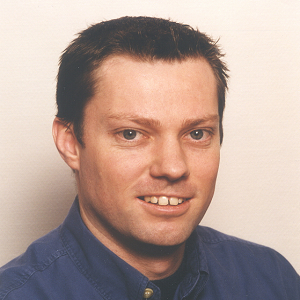
Having used COMSOL Multiphysics for over six years now, we are pleased to have Dr. Jon Ebert, Director at SC Solutions, join us in the next Mechanical Engineering Magazine Webinar Series titled “Heat Transfer in Solid and Fluids”. On March 7th, he will co-host an instructional webinar together with COMSOL’s John Dunec. Dr. Ebert will discuss SC Solution’s simulation activities within a wide span of heat transfer-related applications, particularly with respect to semiconductor manufacturing. As a long-time user of COMSOL Multiphysics, this promises to be an interesting relation of his experiences using COMSOL for heat transfer applications.
A Real Multiphysics User
SC Solutions has been around since 1987 and has seen a lot happen within the simulation and manufacturing of semiconductors. Originally users of the then super computers (that’s what “SC” in their name stands for), they have always focused their consultancy on tying theoretical and simulation studies to experimental investigations and results from real-life manufacturing processes. They will be touching on this aspect of utilizing simulations in the industry, particularly on how it directly relates to controlling temperature in semiconductor manufacturing processes such as chemical vapor deposition (CVD).
Tying simulations to a validation of experimental results is a topic that Jon Ebert and his colleague Sarbajit Ghosal have previously reported on at last year’s COMSOL Conference. Their research centered on modeling Electrochemical-Mechanical Planarization, an emerging electrochemical polishing technology used in the production of semiconductor wafers, where etching occurs at the nanometer scale. Here, they were able to first model and then experimentally validate ionic transport through convection, diffusion, and migration, and the electrochemical reactions. They used the Butler-Volmer equation to compute the current density associated with the copper dissolution as a function of the applied voltage. This is just another example of the use of COMSOL Multiphysics to simulate electrochemical applications, which we have blogged about earlier (Electroplating Simulations Cut Down on Wasted Metal).
Multidisciplinary Modellers
The aforementioned example will probably not be a part of the upcoming webinar, but it does show the versatility of SC Solutions when it comes to their simulation and consultancy prowess. Residing in Silicon Valley and working mostly with the semiconductor manufacturing industry, they have applied COMSOL Multiphysics to many different areas of this field. Not only in electrochemical etching and polishing, but they are also experts in structural mechanics, inductive heating, vapor deposition and, as you will see in the webinar on March 7th, heat transfer.




Comments (1)
M Simon
March 11, 2013I’m watching the presentation as a video and there is no way that I can tell to stop/start it to get all the details. That is what I would expect for a real time webinar. Not for a video.
You can contact me at my e-mail or at:
http://www.ecnmag.com/tags/Blogs/M-Simon/